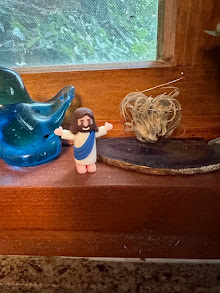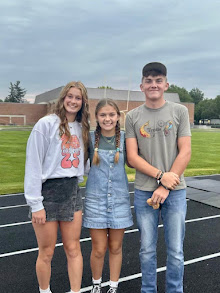"She's gone to Texas?" This is a corollary to the conversation Blake used to have with the kids when I'd be in the basement with a load of laundry or out in the garden or somewhere similarly near but invisible. Sometimes, Lizzie says 'I want to go to pink (or purple) Texas'. I don't know why Texas has a color. More recently, such a declaration produces tears, 'I don't want you to go to Texas!'
Imagine my delight at finding that very phrase within the first few chapters of Fredrick Law Olmsted's book...not only as a commonplace description, but of such routine use that it became an acronym back in the mid 19th century. If a person ran out of money, deceived, cheated, wanted out: whatever the shady occurrence and or misfortune, he could be assumed to have headed south, 'GTT'.
Fredrick Law Olmsted and his brother floated south to Louisiana before acquiring animals and supplies.The river towns of the great interior impressed them with their energy, disorder and filth. The Southern planters in Eastern Texas dominate the first part of the book. Without fail, their homes are ill constructed, their diets one dimensional (pone and pork), their company lacking in culture and conversation. Olmsted has traveled south to observe and report on the people and their agriculture but it doesn't take him long to reach one mighty conclusion: that plantation agriculture and its society degrades the white land and slaveholders. The plantation farms he describes work their slaves intensely, but still leave cotton unpicked when the winter weather strikes. The travelers sometimes have a difficult time finding feed for their animals from these stops, much less hay because the plantations use all their land growing cotton. Corn is purchased for people and animal use. The travelers are aghast at the poor condition of fields and farm homes; no caulking, no doors, no windows. The first chapters about eastern Texas are so depressing one gets the impression Mr. Olmsted and brother might not be tough enough, or be just too Eastern for the rough and tumble of the frontier. As a solid member of the great unwashed of interior, I was beginning to think I might leave him to his sensitivities despite his occasional self deprecating anecdotes and the appealing descriptions of his four legged companions.
But then the Olmsteds reached the German part of Texas, where the immigrants had constructed tidy communities with white washed homes, inns with actual bread on the tables, fresh butter, private rooms, and no slaves. These farmers raised their own corn, had fenced gardens, and impressed the Olmsteds again and again with their newspapers, their conversations, their cultures. Those with no land described themselves as 'mechanics', and it is obvious from the book that the immigrants and pioneers of western Texas were more than able to pull themselves up by their bootstraps and hand labor; a journeyman with one tool had a means to earn a living.
What is most obvious to a reader of the twenty-first century is the complete reliance and focus on the soil and climate. Olmsted spends pages describing the lands in the bottoms of the many rivers, both constant and ephemeral. He summarily dismisses what cannot be cultivated as good 'just for grazing lands'. He waxes eloquent about the characteristics of the various grasses....mesquite grass is the creme de la creme. He also proclaims the climatic changes brought about by increasing cultivation in Texas; more rain according to some measurement, reminding us that 'rain follows the plow' got an early start among our forefathers.
At that time, one railroad comprised the ground transport for all Texas and that was way east near Galveston. All the cotton grown had to be hauled on wagons, behind oxen, on unimproved trails that might be constructed by man, or might just be cow paths. The plantations were plowed, sowed to cotton, but without access to fertilizer, the land wore out in a few years and was abandoned while the growers moved on.
Except for one mention of some bituminous tars used for construction of adobes, not an intimation of the mineral wealth waiting underground.
I love travelogues; I love Western history, both natural and manmade. My sister gets the credit for pointing me in the direction of this type of book written in the past. I recognize Fredrick Law Olmsted as the designer responsible for Central Park as well as many other landscape achievements. But, like many of our forebears, he was rather a polymath, fancying himself a 'scientific' farmer but having the time and wherewithal to spend a year traveling and writing. He made it easy to visualize the endless wet spring coasts of eastern Texas, the northers coming down from the endless span of the Great Plains, and most of all, the hills, rivers and grasslands of what he called 'western Texas'. To listen to F.Olmsted, Texas was bound for greatness because of its soils and beauty. I doubt many Texans would disagree!!















No comments:
Post a Comment